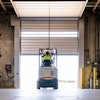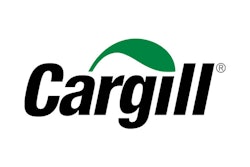We’re only midway through the 2017 Atlantic hurricane season, and it has already been an active one.
Last month, Hurricane Harvey became the first major hurricane to make landfall in the United States since Wilma in 2005. The historic storm dumped more than 40 inches of rainfall in southeast Texas and southwest Louisiana, breaking records and becoming the wettest tropical cyclone on record in the contiguous U.S.
This week, the state of Florida is preparing for the arrival of Hurricane Irma, and food and beverage facilities are making plans to ensure safety and minimize damage.
When preparing your plant for a hurricane threat, it’s critical to establish an emergency plan to protect against these potential losses:
- Flooding due to a tidal surge — Check your area Federal Emergency Management Agency (FEMA) flood map to see if you are located in an area vulnerable to tidal surges and flooding. Tidal surge flooding should also be factored into evacuation routes and timing.
- Freshwater flooding from torrential rainfall — Again, check your FEMA flood map to determine areas vulnerable to freshwater flooding. Just like with tidal surges, flooding due to rain should be factored into evacuation procedures.
- Wind damage — High wind speeds can cause significant damage. A category 1 hurricane (the weakest category) has wind speeds of 74-95 mph, while a category 5 hurricane (the strongest category) has wind speeds over 157 mph. Power outages are likely (due to downed power poles and blown transformers) and must be planned for accordingly.
You should also recognize the difference between a hurricane watch and a hurricane warning:
- A hurricane watch means sustained wind speeds of at least 74 mph are possible. It is issued 48 hours in advance of the storm.
- A hurricane warning indicates sustained wind speeds of at least 74 mph are expected. It is issued 36 hours in advance of the storm.
Now, let’s walk through the steps to dealing with a hurricane, from preparation to response.
Planning
The purpose of an emergency response plan is to protect your most important assets: your employees. What’s your plan to evacuate the building immediately and efficiently, and how will you account for all employees? A thorough plan will include:
- An evacuation plan and route
- Provisions for data backup, as well as alternate communications and power
- A list of vendors and contractors to provide disaster recovery services
Employees
Identify leaders with the authority and skills to direct others during an emergency. Emergency leaders should be high-performing employees who are confident and cross-trained among divisions. During a hurricane, they will execute evacuation plans and provide instructions.
Access to safety equipment is also critical. Again, plan for the unexpected. Ask yourself the following:
- Can employees easily locate and access emergency equipment in the dark?
- Is that equipment accessible along evacuation routes?
- Does your supply include face shields, respirators, safety glasses, hard hats, earplugs, and personal protective equipment for each employee?
- Do you regularly audit your emergency equipment supply to ensure personal protective equipment will be available when needed?
Industry groups and government regulatory agencies provide requirements and recommendations to follow in developing a plan. For example, check out the Department of Labor’s OSHA Hurricane Preparedness and Response guide.
Equipment
Chart out the following:
- Plant areas impacted by a power outage
- Processes that may be shut down if rooftop equipment is lost
- Key areas that should be protected from water damage
It’s important to appoint a response team who understands all of your plant’s systems and how those systems can be safely shut down in the event of a disaster. In case of a fire, how do you secure your ammonia or refrigeration systems to prevent a release? Who is responsible for safely engaging the system shutdown?
Ammonia releases
Ammonia systems are important to secure in the event of a hurricane, as an ammonia release could be very harmful. One standard operating procedure may include pumping down the system and ensuring it is secured. To verify all roof-mounted equipment is as structurally sound as it was when it was newly constructed, inspect elements including:
- Pipe stands
- Condensers
- Valve groups
- Roof penetrations
- Rooftop unit (RTU)
- Refrigerated makeup air unit (RMAU)
Stellar designed a Bradenton, Florida plant to withstand a category 4 hurricane, which included the building itself, evaporative condensers and all other external equipment on the roof. It is safest to equip your facility in a similar fashion.
Most insurance companies have a detailed hurricane preparedness manual. If you don’t have one on file, ask your carrier to provide one. This can serve as a template to develop a facility-specific checklist for your implementation.
Emergency Response
After a storm blows over, it’s time for catastrophe response. Facilities damaged by high winds and exposure to water and/or debris are very dangerous sites. Often people want to rush into the remains to help those who may be in danger. However, it is important to assess the damage before initiating rescue efforts. Not doing so can cause even further damage or injury.
What to look for
Before sending in the clean-up crew, stop and answer the following to determine the building’s structural integrity:
- What’s required to stabilize the structure?
- How do we restrict access to dangerous parts of the plant?
- How do we conduct demolition without causing further damage to the facility?
- Are there gas leaks?
- Have you shut down power and evaluated electrical hazards prior to exposing personnel to possible electrical dangers?
Bracing and shoring
If there is significant structural damage, bracing walls and shoring floors will help stabilize your facility’s structure. These are highly technical processes and should be handled by experienced professionals. Otherwise, you may expose personnel to a hazardous situation.
Many companies offer bracing and shoring services, as it’s typical for new construction; however, they may not be experienced in the techniques for emergency situations. For your facility’s safety, enlist structural engineers with experience in bracing and shoring following disasters.
Real-Life Hurricane Preparedness and Response
In 2012, Hurricane Sandy caused serious damage to a long-time Stellar customer in New Jersey. In addition to helping the client properly prepare for the storm, our team provided timely on-site services to restore water-damaged areas of the facility as well as re-roof the building after the hurricane passed. This allowed the client to get the facility up and running as quickly as possible.
Many of Stellar’s projects across the U.S. and in the Bahamas have been affected by hurricanes during construction, including Hurricane Harvey in 2017. Due to good planning and by securing job sites from wind and water damage, we’ve avoided significant losses other than workdays. Ensure you have an emergency preparedness plan in place so your facility can be ready for any storm that may come its way.
About Stellar
Stellar is a fully integrated firm focused on planning, design, pre-construction, construction, refrigeration, mechanical & utility, building envelope, and total operations & maintenance services worldwide. Visit the company's blog at www.stellarfoodforthought.net or learn about its projects at stellar.net.






















